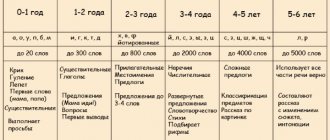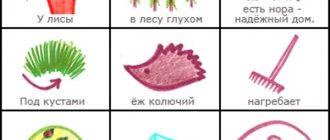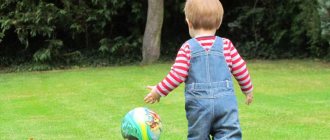Having passed the 3-year mark, children continue to develop rapidly. This progress is especially noticeable in their speech: their vocabulary grows, pronunciation, intonation, expressiveness improve, verbal structures become more complex, monologues become more coherent and consistent. At this stage, it is necessary to properly help the kids in their progress. To do this, it is important to know the main characteristics of the speech development of your children at the age of 4–5 years and understand what is important to work on now.
Age features
After 4 years, children are able to fluently use adverbs, adjectives, and prepositions, although the purity of pronunciation may still suffer due to difficulties with sonorants or sibilants (however, by the end of the fifth year, all sounds normally fall into place). A huge role in this belongs to parents, their ability to create a correct, active speech environment around the child and a favorable environment in the family.
The speech of children of primary preschool age is characterized by the following features:
- children can name the names, patronymics, surnames of all members of their family, and residential address;
- speak 3000–4000 words and actively use them;
- know how to navigate the time of day and the space around them;
- know the names and sequence of seasons;
- know all the basic geometric shapes, counting to five;
- use polite words;
- can identify their well-being and mood;
- know how to fully answer questions and ask them to the interlocutor;
- make a fairly detailed retelling, compose stories on a given topic, come up with the end of the designated story;
- can describe objects, identify an object only by description;
- build phrases of 6–8 words;
- use the imperative mood, plural;
- use synonyms and antonyms,
- use adjectives, adverbs, prepositions correctly;
- coordinate words in a sentence by gender, number, case;
- determine the distinctive features of objects;
- know different professions and their essence;
- can easily retell what they heard and saw;
- They know poems, tongue twisters, and funny nursery rhymes by heart.
At this age, do not put pressure on your child, forcing him to speak correctly and clearly - you will achieve the opposite effect. It is better to make comments in a soft form, affectionately, and friendly. Then the child will probably correct his mistakes very quickly.
Norms of speech ontogenesis at the age of 3-4 years
During this period, the child should speak in detailed phrases and simple sentences. He must correctly pronounce whistling and hissing groups of sounds; sonorants are an exception because they have complex articulation. Two- and three-syllable words appear in speech.
At the age of 3-4 years, vocabulary increases sharply. An expressive vocabulary should have about 2,000 words by the age of four. A three-year-old child combines objects according to a common characteristic and names them in one word. By the age of four, he understands complex sentences outside of a specific situation. He likes to listen to fairy tales and stories, the child understands the meaning of the text he hears.
A 3-4 year old preschooler begins to master simple grammatical categories and coordinates words in phrases and sentences. Pronouns and numerals appear more often in speech. He asks adults more and more questions and gives detailed answers himself. Expresses his opinion, shares his impressions.
What will we develop?
For children 4–5 years old, several aspects of speech development are important, which directly depend on the level of their general development and condition, as well as the speech skills they have achieved.
- Active dictionary.
Now, in addition to nouns and verbs, the speech of preschoolers is distinguished by the presence of adverbs with signs of time and space (soon, now, about, around). The concept of stages of generalization (mouse - rodent - animal) appears. Children know animals, their babies, parts of objects (a car wheel, a cabinet shelf, a chair leg).
Expanding your vocabulary at this age is the main rule for mastering coherent speech.
- The grammatical structure of speech.
Children of this age are actively engaged in word formation. They begin to use suffixes that designate a person by his profession. Now the child forms word forms in a similar pattern, using the same grammatical features. Sometimes it may turn out incorrectly: it hurts - more painful, louder - louder. In the speech of children, there are fewer and fewer errors associated with the inflection of nouns and verbs. But if a mistake is made, after a hint from an adult, the child quickly learns the correct option: floor - floors, lake - “lakes” - lakes.
Mastering the grammatical construction of sentences will help children speak correctly, avoiding speech errors.
- Coherent speech.
After 4 years, children develop contextual speech in addition to situational speech. Inconsistent presentation of events and retelling with the help of questions or prompts from adults are also possible. By the age of 5, without additional help, a child can compose a coherent retelling of several dozen sentences, and among them there are already complex and complex constructions. At this age, the internal, planning function of speech is formed - it becomes a means of planning and regulating the child’s internal behavior.
From this time on, the speech gradually turns into a full-fledged story. In addition, the child increasingly uses the communicative function of speech - uses it for a variety of communication with others. He can ask again, object, clarify, and answer questions with reason.
Mastering coherent speech is an important factor in the success of a child’s further education.
- Speech (phonemic) hearing.
Children of this age group distinguish sounds of different articulations (for example, [a] and [r]), and note pronunciation errors not only in those around them, but also in themselves. Change intonation and timbre of voice during expressive retelling. They can distinguish vowels from consonants, hard from soft, hissing from whistling. They are able not only to determine whether there is a specific sound in a word, but also where exactly it is located (at the beginning, middle, end of the word).
The development of phonemic awareness allows you to pronounce words correctly, and then reproduce them in writing just as correctly.
- Pronunciation.
Normally, by the end of the 5th year, all inaccuracies and difficulties in sound production should disappear in a preschooler. Perhaps the child will pronounce middle sounds between [s] and [sh], [z] and [z], if he has recently mastered them. Sometimes children at this age do not pronounce [r]. At 5 years old, this problem already requires correction by a speech therapist.
So, a five-year-old child should speak expressively, coherently, using a rich vocabulary and a variety of syntactic structures, with virtually no speech errors, pronouncing all sounds clearly. It is important to work on this by involving the child in various linguistic games.
With the help of family
Growing up in a family, a child, first of all, adopts the experience of communicating with relatives: their vocabulary, ways of constructing sentences and expressing thoughts, intonation. Therefore, the speech development of children always depends on the environment in which they find themselves. How active and correct she is in terms of speech makes her psychologically comfortable.
The following tips will help you avoid mistakes.
- Do not imitate your baby's speech if it is incorrect: do not lisp, do not distort words or sounds.
- Always speak clearly and correctly, use the right emotions and intonations, the right tempo and strength of voice.
- When communicating with a child, try to exclude difficult to pronounce words, complex or incomprehensible phrases and expressions from your speech. It is important to explain unfamiliar words found in the work to a preschooler at a level accessible to him, reinforce them with examples, and try them out in practice.
- When asking a child about something, ask clear, specific questions, give them time to understand them, and don’t push them with an answer.
- Don’t imitate or get irritated if your baby makes a mistake: correct it calmly, gently.
- Read more poetry - it helps to master the rhythm of speech;
- Try to avoid frequent quarrels, scandals, cruel punishments, threats, and blackmail. All this not only inhibits the development of speech, but can lead to more serious consequences: stuttering, isolation, embitterment of the child, the appearance of complexes and phobias.
How to deal with violation
The level of speech development of a preschooler depends on the diction of the adults around him, the specifics of upbringing in the family, and the efforts made by parents. By completing simple tasks for speech development, the child learns skills in a playful way that will be useful to him at school.
Spending time together with parents is of no small importance: active recreation, visiting museums and theaters, drawing, modeling, folding a puzzle, discussing pictures in a book, while simultaneously commenting on one’s feelings and emotions. All this is a powerful stimulus for the child’s speech development.
Doing exercises to train diction, memorizing counting rhymes, tongue twisters, riddles and poems allows you to correct pronunciation and enrich your vocabulary. It is important to clarify unclear words and phraseological units so that the preschooler can use them correctly in the future.
Speech therapists recommend reading aloud to your child as much as possible. After reading, you should discuss the fairy tale or story, explain the meaning of new words, and evaluate the actions of the characters.
Speech development tasks for children 5-6 years old allow you to develop skills in logical presentation and argumentation of thoughts:
- compiling a story based on a picture;
- detailed answer to questions based on the text;
- retelling what was heard.
You should stop the baby, correcting incorrectly pronounced words and ask him to repeat the word without error. Home theater will allow the child to show his acting abilities, learn to use his voice, making it quieter or louder, use intonation, and pause.
The development of oral speech is the basis for mastering reading and writing, as well as the key to successful learning at school. Therefore, it is worth starting classes as early as possible. And if violations are detected, consult a speech therapist and correct the pronunciation.
We teach in the game
After analyzing the above norms, parents can understand which areas of their child’s speech need to be developed first: those with which there are problems. To correct each individual area, you can select appropriate games for speech development. First of all, to expand your vocabulary. Here are some examples of such games.
- The adult names the object, and the child must put this word in the plural (wall - walls). In the course of such a game, you can also touch on polysemy (for example, a child, a chair or a seat can have a back, and a mug in the plural, only with a different emphasis - these are both geometric figures and sections for creative activities). At the same time, the child’s attention is promptly focused on the fact that not all words “multiply” equally (lion - lions, mouth - mouths). This develops the skill of using the plural and expands your vocabulary.
- You can introduce your child to antonyms by offering to select opposite meanings for words (soft - hard, clean - dirty). At the same time, let him select words with new meanings (white snow - black night), and then replace them with pronouns (he is white, she is black). This way the preschooler will practice agreeing words and using pronouns.
- After reading a story or poem, you can invite your child to come up with his own ending. It also develops thinking, imagination and coherent speech.
- Playing with a ball allows you to develop various skills: enrich your vocabulary, master synonyms, antonyms, recognize objects by description, form new forms of words. For example, a child is thrown a ball, naming the object, and he returns the ball, calling the object affectionately. Or in response to a word it selects the opposite meaning. Or names an object, having heard its signs, names the color of the specified object. Parents' imagination can suggest other options for such games.
- Animate and inanimate objects. The concept of them can be easily reinforced by playing with cards: the child must put animate objects in one group, inanimate ones in another, helping himself with questions: “This is a pear. She is alive? No. This is a cow. She is alive? Yes".
- Using a similar exercise, you can introduce your baby to relative adjectives. One group of cards will contain objects, the other will contain the materials from which they are made. The child’s task is to correlate the two pictures, saying: the ball is made of rubber. It's rubber. The pencil is made of wood. It is wooden.
In order for a preschooler’s speech to become more expressive, offer him such a game (several children or a family should play). The child, on the instructions of the adult, must demonstrate to the other players different shades of a person’s mood (fun, surprise, sadness, anger, fatigue, despondency). In this case, the baby can use appropriate intonation, facial expressions, interjections (oh-oh, wow, wow, eh, ah, ah-ah). The rest of the players guess what exactly was shown.
Her Majesty Grammar
Mastering grammatical structure is very important for children of this age, since it allows them to avoid incorrect use of word forms. To practice this skill, there are many game tasks that children perform with interest.
- Where is the mistake? The child is shown a card and describes the object depicted on it, making logical errors. The kid must discover them (big elephant - yes, winged - no, heavy - yes, blue - no).
- It doesn't happen that way . The child is read sentences in which he must detect a discrepancy with reality (winter has come, and migratory birds have returned from the south). Then the baby must correct this mistake (birds fly in the spring).
- Which? The adult names the object, the preschooler must select several characteristic adjectives for it (the sun is round, hot, yellow, the grass is green, tall, thick).
- What is this? The adult describes the object, and the child must guess it. The second option is that the child is given a card with a picture of an object, and he must describe the picture so that others can guess what it is about.
- What happens? The adult names the attribute of the object, the child’s task is to select as many nouns with this attribute as possible. For example, tall - a house, a closet, a fence, a giraffe, a construction crane; blue can be the sky, the sea, cornflowers, mother's eyes, a parrot, etc.
- Confused. An adult reads a sentence with an obvious usage error. The child must find it and correct it (the picture is of Masha, the hare is catching a fox, the children went for a walk, Kolya likes to play, Dasha got dressed and went into the yard, etc.).
Exercises and tasks
The main exercises and tasks that need to be done daily at home for the active development of coherent speech are:
Articulation gymnastics
- Eat some jam. You need to imagine that after eating the pie there is jam left on your lips that needs to be licked. Using your tongue, smoothly lick the jam from the lower and upper lips.
- Spade tongue. It is necessary to imagine that the tongue is a shovel, which should lie on the stand (lower lip) for as long as possible. We extend the tongue, placing it on the lower lip, and hold it in this position for 10-15 seconds.
- The tongue is a needle. You need to imagine that the tongue is a thin needle that needs to be held in place. We stretch out our tongue, trying to make it narrow, and try to hold it for 10-15 seconds.
- I'm a horse. The child needs to imagine himself as a horse that clatters its hoofs and clicks its tongue. We stomp our right and left feet in turn, clicking our tongue as we do so.
These exercises are best done for no more than 5-7 minutes and repeated 2 times a day.
It’s more fun to do articulation gymnastics with children by looking at pictures and reading rhymes.
Finger games
- Kitty. Both palms are clenched into fists and lie on a flat surface. It is necessary to simultaneously straighten the fingers on both handles, pressing them tightly to the table. The exercise must be repeated 4-5 times. After several lessons, the task can be complicated: first, the fingers on one hand are straightened, then they are compressed, and on the second they are straightened.
- Let's treat the cat with milk. Palms as if scooping out milk.
- Bunny. The fingers imitate the ears of a bunny, the fingers run along the table, clenched into a fist, fist in fist.
- Dog. The index finger shows the tail of the dog, the fingers are clenched into a fist, the thumb is raised up, the fingers run away.
Using finger games with parallel learning of rhymes can show quite good results, since there is a strong relationship between the human hand and the speech center of the brain. The baby easily and more emotionally perceives information and reproduces it in the future without problems.
Logorhythmics
Logorhythmics is the simultaneous reading of poetry, accompanied by a certain set of movements against the background of thematic music. Initially, the adult shows everything by example, after which the child is asked to repeat what he just saw.
The optimal time to complete this task is the second half of the day, the regularity of classes is every 1-2 days.
A special place in speech development classes is given to cartoons, which children love so much. There are specially designed cartoons aimed at reinforcing the letters of the alphabet, learning colors, learning to count and speech development.
The choice of cartoons remains up to the parents, but a prerequisite is its versatility (for both boys and girls), the presence of positive characters, and high quality video and sound.
Don't miss anything
Noting the child’s mistakes, parents can choose other games, for example, those that help master the singular and plural forms of verbs, the imperative mood, present and past tense, practice the use of adverbs, prepositions, the ability to coordinate nouns with adjectives, verbs, etc.
If a child has problems pronouncing sounds, tongue twisters, articulation exercises (discussed here), and the development of fine motor skills (described in this article) will help. If a child cannot differentiate sounds or syllables in speech, games to develop phonemic awareness will help (see here - “Speech development in preschool children”).
The main thing is to remember: we develop a child’s speech not in order to show off to neighbors or “outdo” someone, but to help the child in further socialization, in learning, and in communicating with peers. Therefore, you should not chase after someone or prove something to someone. The task of parents is to help their child become successful in life, and not to break someone else's records.
Exercises for the development of coherent speech in children 6-7 years old
Phrasal speech develops by imitation. The child must hear correct, competent, well-delivered speech, which he will take as a model. Children acquire their native language unconsciously, through listening.
Reading high-quality literature, listening to audio plays and audio books, watching theatrical performances have a beneficial effect on the richness and content of children's speech. To expand your speaking capabilities, it is not necessary to conduct special developmental classes.
You can develop coherent speech in everyday situations:
- Read books, discuss what you read.
- Learn poetry.
- Remember in small details the road from home to kindergarten.
- Ask to retell the plot of the cartoon you watched.
- Offer to fantasize on the topic “If I were a wizard...”.
- Come up with a story together, write it down and draw illustrations.
- Consider wimmelbooks - books without words, with many drawings in which objects and people are drawn in detail. Wimmelbook is an excellent simulator for the development of all speech functions. The child will be able to compose stories and stories based on the illustrations.
How to develop thinking
The development of cognitive mental processes is a mandatory component of speech therapy classes. Thinking and speech are inextricably linked. Speech is the main tool of thinking. With the development of logical thinking, the child develops the ability to compose coherent sentences, formulate thoughts and conclusions.
Games for developing thinking:
- The child is offered pictures depicting various objects that need to be combined into semantic groups.
- A series of pictures is selected in which one of the objects is redundant. You need to find this item and explain your choice. Another version of the task: the teacher reads the words, the children, having heard the odd one out, clap their hands.
- The teacher names an adjective, the children find an antonym for it.
- An adult thinks of an object and describes its characteristics. The children's task is to guess the object.
How to develop memory
Memory is a person’s ability to perceive and remember information for subsequent reproduction. Without it, speech development is impossible. Verbal-logical memory is the psychological basis of speech.
Exercises for speech development.
Memory development exercises:
- Game “What has changed?” There are 2 similar pictures with different details. The child needs to find the differences.
- An image of several objects is offered, the child needs to look at them and draw from memory.
- The teacher throws a ball to the children and names a generalizing word (transport, animal, clothing, etc.). The child catches the ball and names the appropriate object.
- The teacher names a profession, the children describe the verbs that relate to it.
- An adult taps the rhythm with a pencil. Children repeat the rhythm, gradually increasing the tempo.










